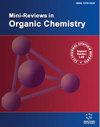香豆素绿色合成方法的最新进展
IF 1.9
4区 化学
Q2 CHEMISTRY, ORGANIC
引用次数: 0
摘要
香豆素及其衍生物在新药开发中发挥着重要作用,是开发生物活性化合物的特殊杂环基序和重要组成部分。因此,已经开发了许多方法来合成这类重要的化合物。然而,一些方法涉及有毒和腐蚀性催化剂、较长的反应时间、较差的产率、较低的纯度以及所需产物的副产物。为了最大限度地减少有毒有机物质的利用和产生,以这种方式应用了绿色合成方法。绿色化学方法涵盖了广泛的方法,包括超声波和微波、离子液体和深共晶溶剂、无溶剂和无催化剂合成以及机械合成的应用。这些绿色合成方法已经成功地进行了香豆素合成的所有典型缩合反应,如Knoevenagel、Perkin、Kostanecki-Robinson、Pechmann和Reformatsky反应。与传统方法相比,这些方法不仅最大限度地减少了有害化学物质的使用和产生,而且在产品产量、纯度、能耗和合成后程序方面提高了反应效率。鉴于香豆素(2-氧代-2H-1-苯并吡喃)骨架作为一种生物活性普遍存在的片段,以及近年来对减少有毒溶剂、催化剂和能源消耗的需求,本文综述了香豆素合成的各种绿色合成方法。此外,从事香豆素支架合成的研究人员可以从这篇综述中找到关于香豆素合成的绿色合成方法的方便信息。本文章由计算机程序翻译,如有差异,请以英文原文为准。
An Update with Recent Green Synthetic Approaches to Coumarins
Coumarin and its derivatives are privileged heterocyclic motifs and important building blocks for developing the biologically active compound due to its significant role in the development of new drugs. As a result, many methodologies have been developed to synthesize this important class of compounds. However, some methods are associated with toxic and corrosive catalysts, longer reaction time, poor yield, less purity, and by-products along with the desired product. In order to minimize the utilization and generation of toxic organic substances, green synthetic methods are applied in this manner. Green chemistry methods cover a wide range of methods, including the application of ultrasound and microwaves, ionic liquids and deep eutectic solvents, solvent-free and catalyst-free synthesis, and mechanosynthesis. These green synthetic methods have successfully performed all typical condensation reactions for coumarin synthesis like Knoevenagel, Perkin, Kostanecki-Robinson, Pechmann, and Reformatsky reactions. Compared to conventional methods, these methods not only minimize the use and generation of harmful chemicals but also improve reaction efficiency in terms of product yields, purity, energy consumption, and post-synthetic procedures. Due to the implication of coumarin (2-oxo-2H-1-benzopyran) backbone as a biologically active ubiquitous fragment and the recent demands of reducing toxic solvents, catalysts, and energy consumption, this review summarized various green synthetic methods for coumarin synthesis. Moreover, researchers working on this coumarin scaffold synthesis can find handy information from this review on the green synthetic approaches to their synthesis.
求助全文
通过发布文献求助,成功后即可免费获取论文全文。
去求助
来源期刊
CiteScore
4.50
自引率
4.30%
发文量
116
审稿时长
>12 weeks
期刊介绍:
Mini-Reviews in Organic Chemistry is a peer reviewed journal which publishes original reviews on all areas of organic chemistry including organic synthesis, bioorganic and medicinal chemistry, natural product chemistry, molecular recognition, and physical organic chemistry. The emphasis will be on publishing quality papers very rapidly, without any charges.
The journal encourages submission of reviews on emerging fields of organic chemistry including:
Bioorganic Chemistry
Carbohydrate Chemistry
Chemical Biology
Chemical Process Research
Computational Organic Chemistry
Development of Synthetic Methodologies
Functional Organic Materials
Heterocyclic Chemistry
Macromolecular Chemistry
Natural Products Isolation And Synthesis
New Synthetic Methodology
Organic Reactions
Organocatalysis
Organometallic Chemistry
Theoretical Organic Chemistry
Polymer Chemistry
Stereochemistry
Structural Investigations
Supramolecular Chemistry

 求助内容:
求助内容: 应助结果提醒方式:
应助结果提醒方式:


